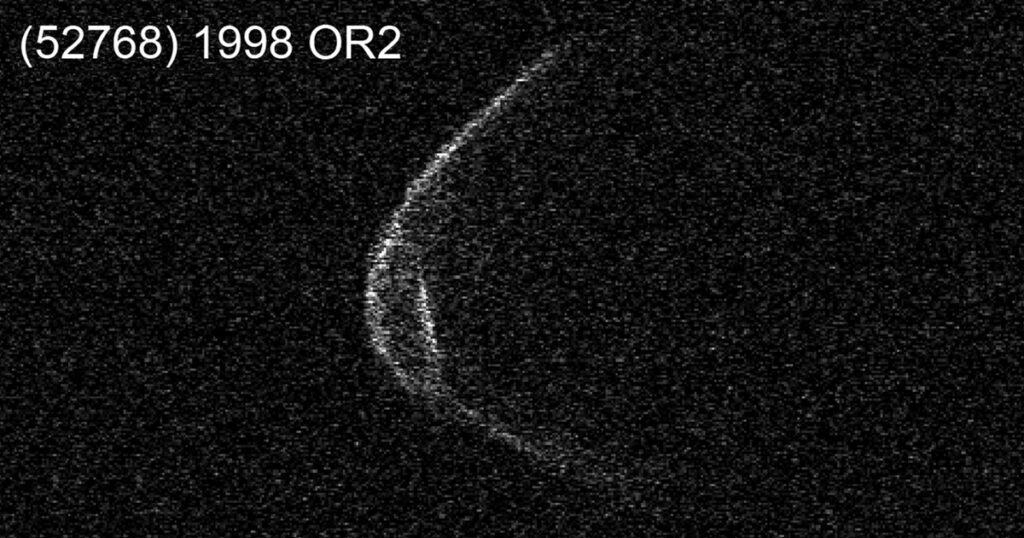It’s not unusual for asteroids to zip past Earth. Scientists estimate that every year, several dozens of asteroids of different sizes fly by Earth at a distance closer than the moon. A team of experts at Arecibo Observatory however, observed an unusually shaped asteroid, which appears to have an eerie similarity with a person wearing a face mask. Researchers at the Arecibo Observatory monitor these and other types of near-Earth asteroids, and use their observations to predict the trajectories of future PHOs.
According to USA TODAY, the space rock, known as 1998 OR2, will be nearly 4 million miles away from Earth on Wednesday at 5:59 a.m. ET.
Even asteroids are aware of the fact that they need to wear face masks when they approach Earth in 2020. The huge asteroid known as (52768) 1998 OR2 will pass closest to Earth on April 29, 2020. Observers peering through telescopes will see it as a slow-moving “star”.
“The small-scale topographic features such as hills and ridges on one end of asteroid 1998 OR2 are fascinating scientifically,” research scientist Anne Virkki said in a press release Thursday.
According to Arecibo data, 1998 OR2 is about 1.2 miles across and rotates approximately once every four hours and will be nearly 4 million miles away from Earth on Wednesday. This means that the asteroid falls into the category of “potentially hazardous”, despite the impossibility of it posing a threat to Earth anytime soon.
“Although this asteroid is not projected to impact Earth, it is important to understand the characteristics of these types of objects to improve impact-risk mitigation technologies,” she said.
The asteroid has been traveling at nearly 20,000 mph (31,320 km/h) since its discovery in 1998 from Haleakala Observatory, Hawaii.
Professional observatories have been pointing their telescopes at the huge space rock already, while amateur astronomers with smaller telescopes will also have an opportunity to see it as a slow-moving “star”. If you do not have access to a telescope, then no need to worry. The Virtual Telescope Project in Rome will host a free, online public viewing of the asteroid on April 28, 2020.
Since April 8, astronomers at Arecibo Observatory in Puerto Rico have been studying the asteroid. Gianluca Masi of the Virtual Telescope Project also acquired 166 images of the asteroid, which provided additional information about its size as well as movement. The images uniquely revealed the overall shape of the asteroid and some smaller-scale topographic features, such as hills and ridges.
“The radar measurements allow us to know more precisely where the asteroid will be in the future, including its future close approaches to Earth,” says Flaviane Venditti, a research scientist at the observatory.
Arecibo said that scientists continue to monitor asteroids for planetary defense purposes.
“In 2079, asteroid 1998 OR2 will pass Earth about 3.5 times closer than it will this year, so it is important to know its orbit precisely,” said Flaviane Venditti. Until 2027, asteroid (52768) 1998 OR2 will be the closest one to pass Earth at such close proximity until another huge asteroid known as (4953) 1990 MU will safely pass by Earth at 12 lunar distances.
